Dear readers, fellow gamers,
We hope you are all well. Steady progress since the last time we published here. This progress has lead us to slightly reconsider our plans regarding the way we design and release the game. But worry not! You will actually benefit from these changes.
This DD will thus be a slightly hybrid one. We will first tell you about our general plans for the game itself. In a second part, we will tackle some history and describe the context around the 1927 Shanghai Insurrection. Last but not least, we will show you the characters planned for this scenario. Enjoy the read!
Rise of the White Sun: our plans
Work around the development of RoWS started back in late 2019. What we wanted to do then was to provide you with a military and political campaign from 1920 to 1931, centred on your character rising through the ranks of the GMD and eventually taking the lead of the party to reunify China. This remains our ultimate goal.
However, we came to realise this was too big of a chunk to develop at once. Making the whole campaign before releasing RoWS would have you wait again for some more years. This is why we decided to work step by step. As a result, we decide to proceed via releasing several scenarii and building on them. These scenarii act as building blocks for the different parts of the game (political intrigue, military campaigning, province management, relations with other characters, etc.) and enable us to have you 1) test them within a limited scope / timeframe and 2) begin playing RoWS as soon as possible! Your feedbacks will be crucial in refining and fine-tuning the game mechanics.
We are therefore pleased to announce that the very first of these scenarii to be released will be the 1927 Shanghai Insurrection. See next paragraphs for more information!
Oh, one last thing. How cool would it be to challenge a friend / friends on RoWS and see which one of you prevails in your struggles? Very cool, indeed. That is why we are adding multiplayer to the game. Yes, you read it correctly. And multiplayer will be released together with the above-mentioned scenario. The team is looking forward to seeing what your games will make of China!
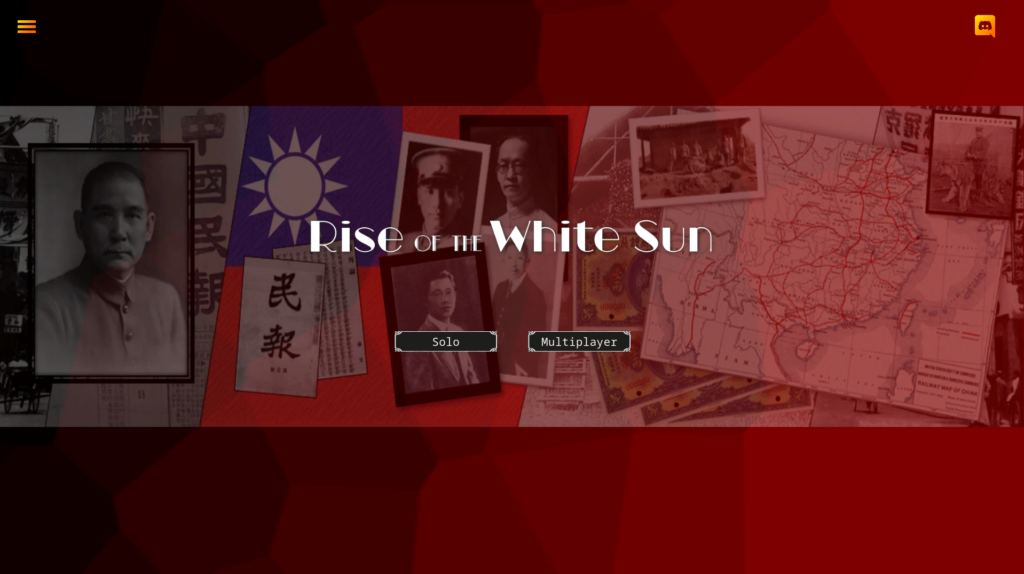
So, in a nutshell, two announcements: several RoWS scenarii will be released over time – and we will progressively connect the dots – and we add multiplayer to the game! And now, without further ado, let us take you to that Shanghai Uprising scenario.
The 1927 Shanghai Uprising
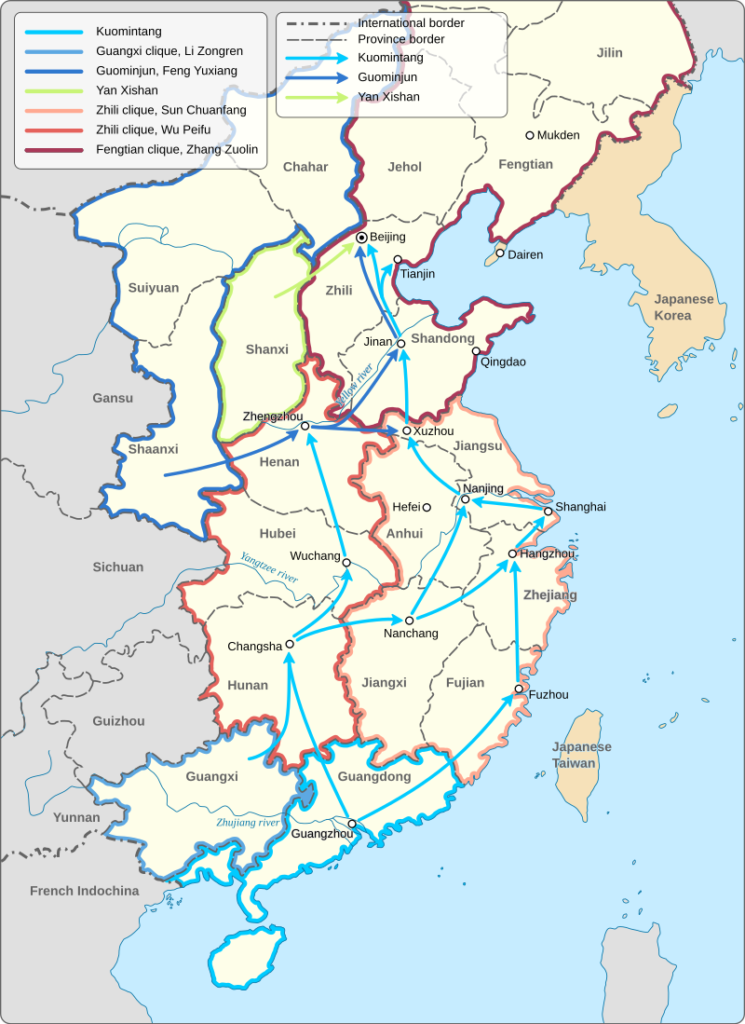
Source: Goran tek-en, Wikipedia CC BY-SA 4.0
The March-April 1927 Shanghai Uprising was a turning point in Chinese history. Let us put a some context around this event so that you get the full picture.
Marching north to war
The Northern Expedition was launched by the Guomindang in June 1926 with the objective to crush or rally the warlords on their way. Beijing was set as the final goal. This is because the old imperial city still was the internationally recognised seat of the Chinese goverment. However, dissensions soon divided the campaigning National Revolutionary Army (NRA):
- The powerful left-wing GMD, supporting the alliance with the CCP and the USSR, wished to march north through Changsha and Wuchang to link up with their Soviet ally as soon as possible. Wang Jingwei and his faction marched up to Wuhan and established their HQ there,
- The right-wing GMD, led by Jiang Jieshi, saw securing the wealthy Chinese coast, and especially Shanghai, as a key objective. He lead his army through Hunan and Jiangxi / Fujian and Zhejiang, defeating the armies of warlords Wu Peifu and Sun Chuanfang along the way. Shanghai was the next target .
In December 1926, in Nanchang, Jiangxi, Jiang Jieshi and his conservative allies defined a policy of progressive destruction of the communist cells in the GMD – the ‘Nanchang Policy’. By that time, the two wings of the GMD were not far from warring each other. The sparkle that would ignite the whole powderkeg, Shanghai, was only a few months away.
Seizing the ‘Queen of the Orient’
In 1926, Shanghai was under the control of warlord Sun Chuanfang, leader of the unstable League of Five Provinces (Anhui, Fujian, Jiangsu, Jiangxi, Zhejiang). He had wrestled it from Zhang Zongchang, warlord of Shandong, back in November 1925. Sadly for him, Sun Chuanfang’s forces ended up encircled and badly beaten by Jiang Jieshi’s forces in Nanchang, Jiangxi, in October 1926 . Seeing the danger of the Northern Expedition, the Chinese Warlords agreed to form a loose alliance headed by the powerful Zhang Zuolin (Fengtian Clique) in November 1926 – the National Pacification Army (安國軍, Ānguójūn). Shanghai, the economic centre of China, was to be defended at all costs as NRA Bai Chongxi’s army began marching on Shanghai in January 1927.
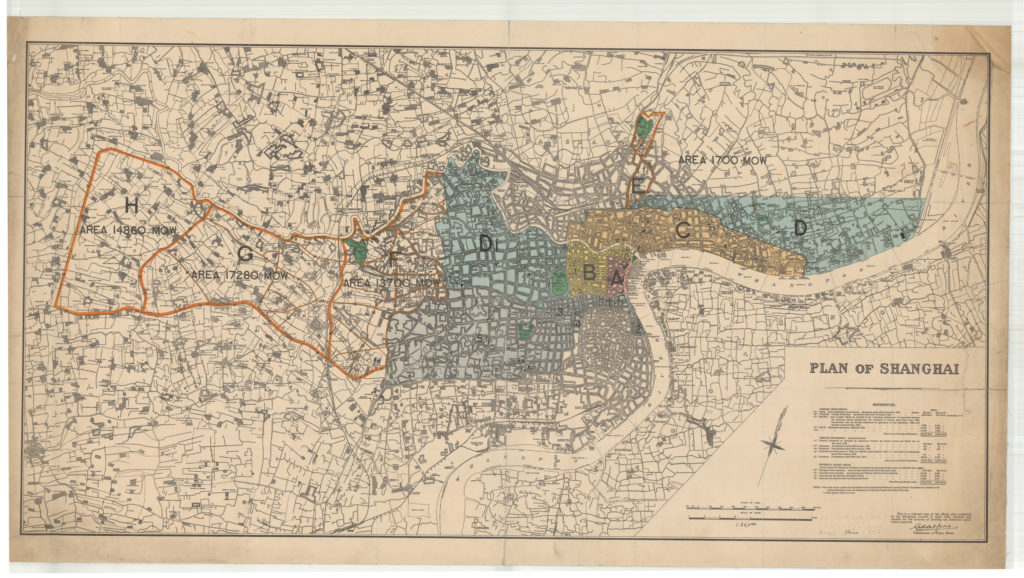
Work had already began since September 1926 to undermine warlord control over Shanghai. The GMD and CCP were busy spreading propaganda, sabotaging and corrupting enemy officers. Despite a white terror launched in January 1927 and a failed communist uprising in February 1927, their work proved efficient. The warlord high-ranking officers were almost all rallied to the GMD around March; the military advance was even halted to obtain peaceful surrender of the warlord garrison.
Unfortunately, relations between the left-wing and right-wing GMD had worsen beyond the point of no return since the beginning of 1927. Aware of the attacks on theirs comrades and left-wing allies in Nanchang, the communists decided to launch another general strike. The strike would prepare the ground for a proper insurrection to take the city before the NRA could set a food in it. Get what? their plan was a success.
On 21st March 1927, some 500,000 to 800,000 workers went on strike and paralysed industry, commerce and public services. In parallel, workers’ pickets stormed police precincts and unaware garrisons for guns. Once they were equipped, they launched a full scale assaults on warlord forces, taking control of Shanghai in 36 hours. The warlord garrison surrendered with almost no resistance. The workers’ pickets soon assumed police and military functions over the city. A Provisional Municipal Government, dominated by the CCP, was gathered. With the NRA units with sympathies for the communists entering Shanghai, the future looked bright for the CCP and the left-wing GMD and.
The Shanghai Massacre, 12 April 1927
Jiang Jieshi was terribly aware of the fragility of his situation: he only had 3,000 loyal men in Shanghai by March 1927 and the nearest reinforcements (a mere 10,000 soldiers under He Yingqin) were in Hangzhou – 185km south-west. Action had to be taken so that the left-wing Wuhan GMD and theirs communist allies could not secure definitive control over Shanghai and, as a result, threaten his ascension to supreme power. From late March 1927, in a little less than two weeks, a plan was devised to assert his control over the ‘Queen of the Orient’. Jiang Jieshi sought the alliance of the Green Gang – a powerful underworld mobster alliance in Shanghai. He secured it with the friendship of Du Yuesheng, the most powerful boss of the Green Gang.
Green Gang gangsters would disguise as workers and begin quarelling with the workers’ pickets, ‘forcing’ the army into disarm all workers to ‘maintain order’. Neutrality and safe passage through the International Settlement and the French Concession were secured for the gangsters. This was rather easy as foreign settlements were quite afraid of a forced annexation by the left-wing GMD and the communists; the precedents of the British Settlements in Hankou and Jiujiang (January 1927) were still fresh in their minds. Communists leaders and militants were to be arrested and executed without trial. Jiang Jieshi’s coup was given a date: 12 April 1927.
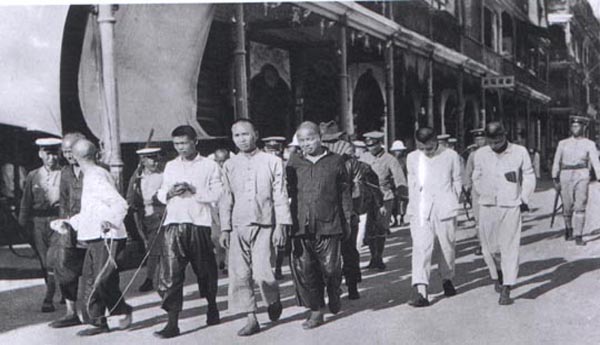
The plan worked well. Wang Shouhua, a key CCP leader, was murdered during the night of 11 April 1927 as he was on his way to Du Yuesheng’s house for dinner. On 12 April 1927, at 04:00am, 1,000 to 2,000 Green Gang mobsters attacked the workers’ pickets strongholds. They tried to resist but were disarmed by five army battalions. By 04:00pm, 400 workers were dead and 900 arrested. Only the Commercial Press Recreational Club, HQ to the communist Shanghai General Labour Union, managed to resist until the next day.
A general strike was called on 13 April 1927: between 50,000 and 100,000 demonstrators protested in Zhabei. It was soon crushed by the army, leaving 100 demonstrators dead on Baoshan Road. The Shanghai Insurrection was definitely over and the 12 April 1927 entered history as the Shanghai Massacre. A new white terror, initiated by Jiang Jieshi, would strike Shanghai for the next six months. That GMD terror is estimated to have taken the lives of 5,000 communists, left-wing sympathisers and collateral victims. Jiang Jieshi had consolidated his power but at the cost of the GMD unity. Conflict broke out between the left-wing Wuhan GMD and the right-wing Nanjing GMD, while the warlords were regrouping to resist the NRA…
The 1927 Shanghai Uprising in RoWS
We hope this (long) historical introduction gave you a solid understanding of the context around the 1927 Shanghai Uprising (and convinced you of why we chose this event for a scenario)! It is now time to move to the way we portray it in the game!
Playable characters

In line with our overaching philosophy, you will be invited to select a character to start the scenario. So far, we have indentified the following historical figures as interesting choices – each one represents belongs to faction with diverging objectives in this multi-faceted conflict for Shanghai:
- Niu Yongjian (Right-wing GMD): Niu Yongjian was sent to Shanghai by Jiang Jieshi in July 1926 with three missions: 1) subverting warlords officers, 2) coordinating GMD and CCP sabotage operations and 3) secretly monitoring Communist activities,
- Wang Shouhua (CCP) : Wang Shouhua was appointed Chair of the Labour Union Committee of the CCP’s Central Committee in October 1926, replacing Li Lisan. He had a clear mission in Shanghai: grow a strong communist trade union base and get prepared for an insurrection,
- Zhou Enlai (CCP) : Zhou Enlai’s organiser talents were directed to Shanghai in 1926 where he could assist with the development of the CCP cell there and help preparing a communist insurrection. He is said to have inspired the character of Kyoshi (Kyo) Gisors in André Malraux’s 1933 Man’s Fate novel,
- Du Yuesheng (Green Gang): Du ‘Big Ears Du’ Yuensheng was the most powerful Green Gang boss in Shanghai. With his HQ being located in the French Concession, he was untouchable by Chinese authorities and wielded considerable influence in both Chinese and French Shanghai. Du was said to be a highly pragmatic gangster who liked appearing like a gentleman,
- Zhang Xiaolin (Green Gang): another French Concession Green Gang boss, Zhang Xiaolin was however outshined by Du Yuesheng and resented this situation. An unpredictable drug user with erratic fits of violence, Zhang remained an influencial figure who was not shy of any methods to keep the opium trade running smoothly in Shanghai,
- Bi Shucheng (Warlord – Zhang Zongchang): the ‘Admiral-General’, serving the Shandong warlord Zhang Zongchang, Bi Schucheng was ordered to protect the Shanghai area in October 1926 in conjunction with Sun Chuanfang’s forces (and take control of the city should the opportunity arise – old rivalry between the two warlords, you know),
- Li Baozhang (Warlord – Sun Chuanfang): Sun Chuanfang’s Defence Commissioner for Shanghai and Songjiang and Commander of the Shanghai Garrison, Li Baozhang was stationed in Shanghai in October 1926 to keep the city under his warlord’s control and fight communist and GMD agents.
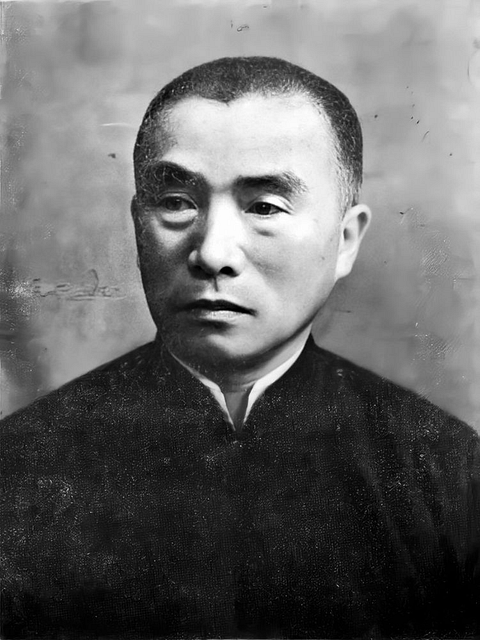
Niu Yongjian 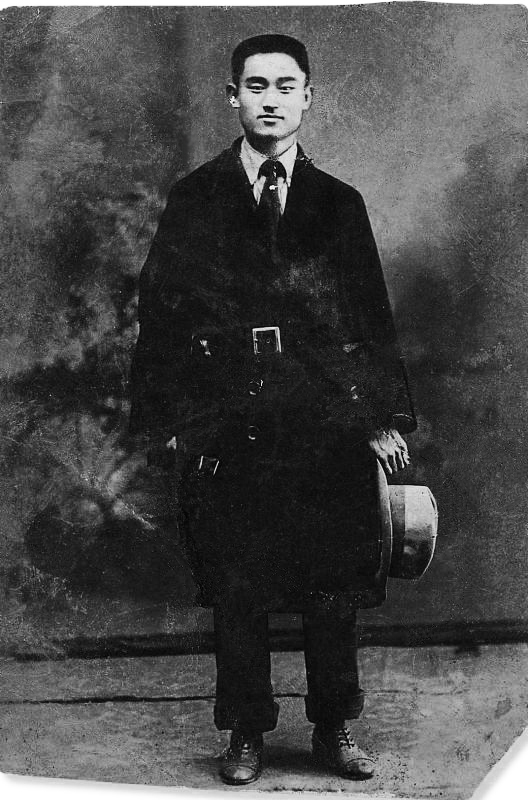
Wang Shouhua 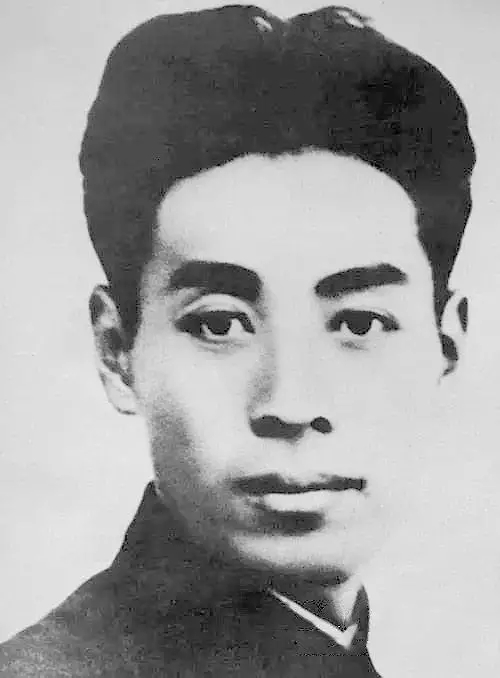
Zhou Enlai 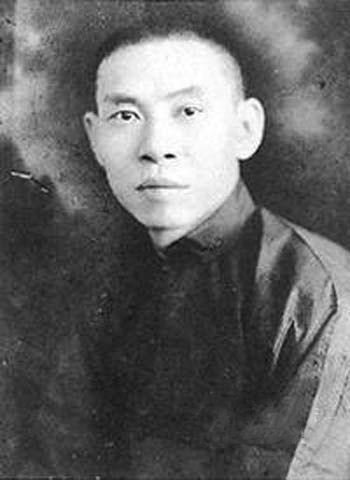
Du Yuesheng 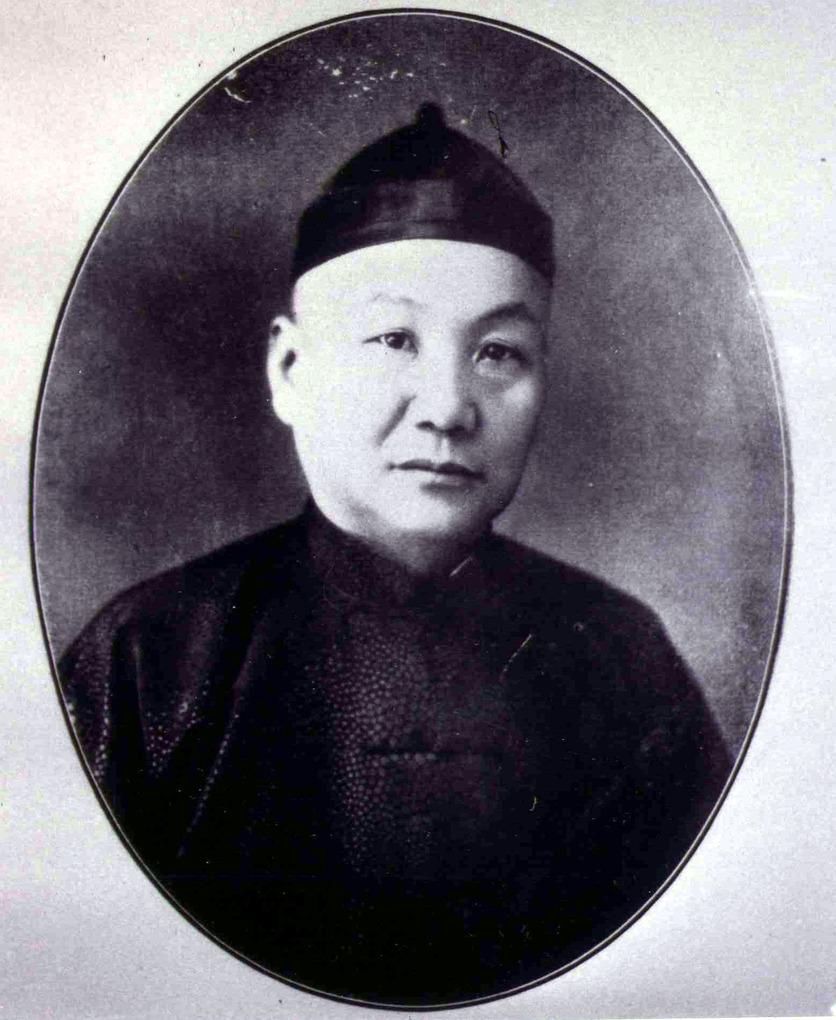
Zhang Xiaolin 
Bi Shucheng
These characters look interesting to us but this roster may of course be subjected to change over the course of development. As you will have noticed, the depicted sides all have rather opposing objectives!
- The right-wing GMD, represented by Niu Yongjian, seeks to undermine Sun Chuanfang’s control by leading his commanders into betraying him or simply surrendering. This helps preparing a bloodless and damage-free taking of the city by the advancing NRA. If the GMD and the CCP are working together in a « coordinated manner », this alliance is increasingly uneasy. The GMD has to remain vigilant no to let the CCP gain too much power in Shangahi and act in an uncontrolled manner. Allies like the powerful Green Gang will be necessary but… can they be trusted?
- The CCP, allied with the left-wing GMD, is represented by Wang Shouhua and Zhou Enlai. Much of the CCP action will first be with workers, organising trade unions while challenging the Green Gang’s grip over workers. They should tread carefully though to avoid angering the powerful mobsters. Could a temporary agreement might be possible with them? The CCP is also preparing the taking of Shanghai by the NRA together with the GMD agents. If coordination is advisable, CCP agents are aware of the increasing hostility from conservative GMD leaders and must definitely prepare a communist-led insurrection in Shanghai.
- The Warlords agents are trying to maintain order and keep hold of Shanghai and its riches. The city is under Sun Chuanfang and his deputy Li Baozhang’s control but, if Shanghai may look calm, agitation is brewing under the surface. Hunting agitators and preventing the enemy from destabilising order are the key tasks – hoping that the warlord forces outside manage to hold off the invader! Bi Shucheng, sent by Zhang Zongchang (warlord of Shandong), also has for objective to prevent the ‘Queen of the Orient’ to get out of warlord hands and has to cooperate with Li Baozhang to secure the city. However, should the opportunity arise, why not trying to get the city for Zhang? Or… for himself? Last but not least, warlord agents are highly corruptible. There may be an interest, past a certain point, in rallying the GMD…
- The Green Gang, being a rather loose coalition of bosses, has one key objective: maintaing their underworld empire fuelled by profits from the opium trade. Du Yuesheng and Zhang Xiaolin usually coordinate their activities with their former master, Huang Jinrong. This makes the French Concession Green Gang the most powerful gang in Shanghai. However, views are diverging on how to keep the business running: should the established arrangements with the successive warlords be protected at all costs, forcing the gangsters to support Sun and Zhang’s men? Or can the GMD be persuaded to leave the opium business untouched in exchange for an alliance? There is also the issue of CCP agents challenging the authority of Green Gang foremen in the factories. Should they be fought with all the Gang’s forces ? Or should a modus vivendi be found with them? The fate of Shanghai is in the Green Gang’s hands!
We will conclude this DD here for today. In the next part, we will take you through the gameplay and show you more pictures of the game!
Stay tuned for more DDs!
